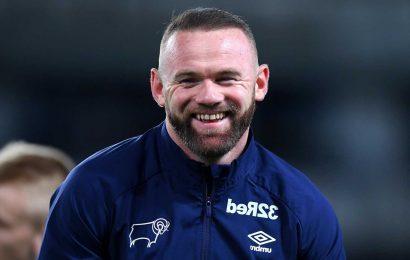AUCKLAND, New Zealand — The main attraction for spectators and television viewers at the America’s Cup will always be the AC75s, the sleek racing yachts that can fly above the water on hydrofoils at speeds as high as 60 miles an hour.
The event’s scene-stealer this week, though, may be the supporting actor that has been racing them: the helicopter filming the races between Emirates Team New Zealand and Italy’s Luna Rossa for international television broadcasts. Its nail-biting maneuvers, almost always at high speed and sometimes only a few feet above the water, have brought the sheen of a big-budget action movie to what can often be a relatively straightforward sprint.
To do its job correctly, the helicopter’s pilot often matches the speed of the AC75s, levitating just above the water as it tracks them for miles up and down the course. The helicopter also flies backward, sideways and on diagonals as needed, diving down and up around the yachts as they all glide just above the water. And it must do it all while avoiding spectator boats, the whitecaps below and, most important, the multimillion-dollar AC75s and their 87-foot masts.
“It is just normal to me,” said Tony Monk, the New Zealander at the helicopter’s controls this year. “I feel safer in the helicopter than I do in the car.”
Monk’s daredevil flying has surprised some spectators unfamiliar with just how the race video is captured. One spectator described Monk’s skills, admiringly, as “insane,” but others said watching the helicopter swirl around the action gave them a sense of foreboding. A few expressed concern that wind from the blades could interfere with the race.
There is precedent for that concern. During the 2017 America’s Cup in Bermuda, Jimmy Spithill, then guiding an American catamaran and this year the co-helmsman for the Italian team, blamed a defeat on a TV helicopter that “took all the wind away” when it flew above his team.
Monk, a New Zealander with about 40 years of flying experience, played down the risks, and the complaints. “Most people see a helicopter only flying forward,” he said. “They can go in any direction.”
He honed his skills avoiding trees and power lines as a crop duster before moving into film production, where his work has included capturing overhead scenes for the “Lord of the Rings” series. When his helicopter is not chasing sailboat races, it leads a much quieter life: flying charters, shooting aerial video and ferrying clients to lunches, golf courses and heli-fishing trips.
During an America’s Cup race, the amount of information Monk must track while in the air is substantial, and constantly changing. His flying must remain within the safety guidelines of the model of helicopter he uses. He cannot fly into the airspace of the other TV helicopter overhead, which provides the wider image — often overlaid with graphics — that allows viewers to track the boats on a course marked up like a football field. (That video is shot by Monk’s son, Blair.)
Monk also must stay a set distance — at least 500 feet — from any spectator boats and populated areas. The figure is closer than the usual 1,000 feet, and to venture inside it Monk and race officials required special permission from the Civil Aviation Authority of New Zealand.
And then there is the downwash, or wind generated by the blades, which is a unique problem when filming a sailing race since the pilot must avoid interfering in the competition in any way. A windy day means downwash is dispersed much faster than on a calm day, and that allows the helicopter to fly closer to the AC75s, Monk said. And if the boats are headed upwind, Monk can get closer if he flies behind them than if he flies in front. “You’re always conscious of the wind direction,” he said.
“At times we have to lift up very rapidly because of where the boats are coming through the marks,” said Monk, whose flying is guided by his ability to visualize what the onboard camera operator is seeing through the lens attached to the bottom of the helicopter, all while also taking orders over the radio from the TV director. (There is also a still photographer on board, sitting by an open door, and a spotter who acts as a second set of eyes for Monk.)
Why helicopters? Drones were originally considered for the job but were quickly scrapped as the weight of the camera equipment added up. “Pretty quickly you end up in the position of having a drone the size of a dining table up there,” said Leon Sefton, director of production for the America’s Cup.
Besides, Sefton and his team prefer Monk as their living, breathing eye in the sky. Since Monk is right there, Sefton said, he has a spatial awareness that a drone pilot working remotely would not.
“The race yachts can sometimes do what seems to us to be unpredictable things,” he said.
Source: Read Full Article










